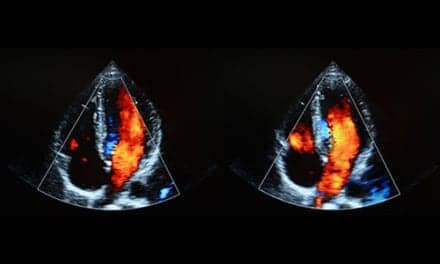In certain patients, measurements of pulmonary artery (PA) distensibility are more effective at detecting pulmonary hypertension due to left heart disease than measurements of PA dilatation.
In this prospective, diagnostic and prognostic study, 100 patients (mean age, 63±17 years; 79% men) who were considered for heart transplant due to HFrEF, for transcatheter aortic valve implantation due to aortic stenosis, or for surgery due to primary mitral regurgitation at a single center in Belgium, were recruited between 2015 and 2019. All patients underwent right heart catheterization, ungated computed tomography (CT), electrocardiograph (ECG)-gated CT, and echocardiography.
The patients with vs without PH differed significantly in heart rate (76±13 vs 65±11, respectively; P <.001), rates of atrial fibrillation (32% vs 11%, respectively; P <.001), New York Heart Association functional class III or IV (41% vs 20%, respectively; P <.001), HFrEF (59% vs 41%, respectively; P<.001), aortic stenosis (65% vs 35%, respectively; P <.001), and mitral regurgitation (27% vs 73%, respectively; P <.001).
PA distensibility <18% was found to detect PH-LHD with 96% sensitivity, 73% specificity, an area under the receiving operator curve (AUC) of 0.92, which was significantly larger than the AUCs for tricuspid regurgitation gradient (0.83), or for the ratio of PA diameter to aorta diameter (0.82).










